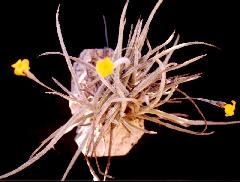
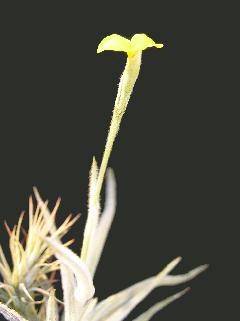
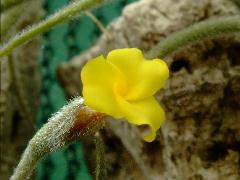
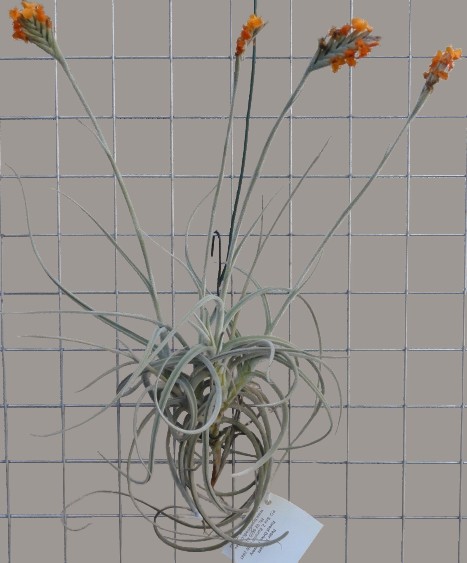
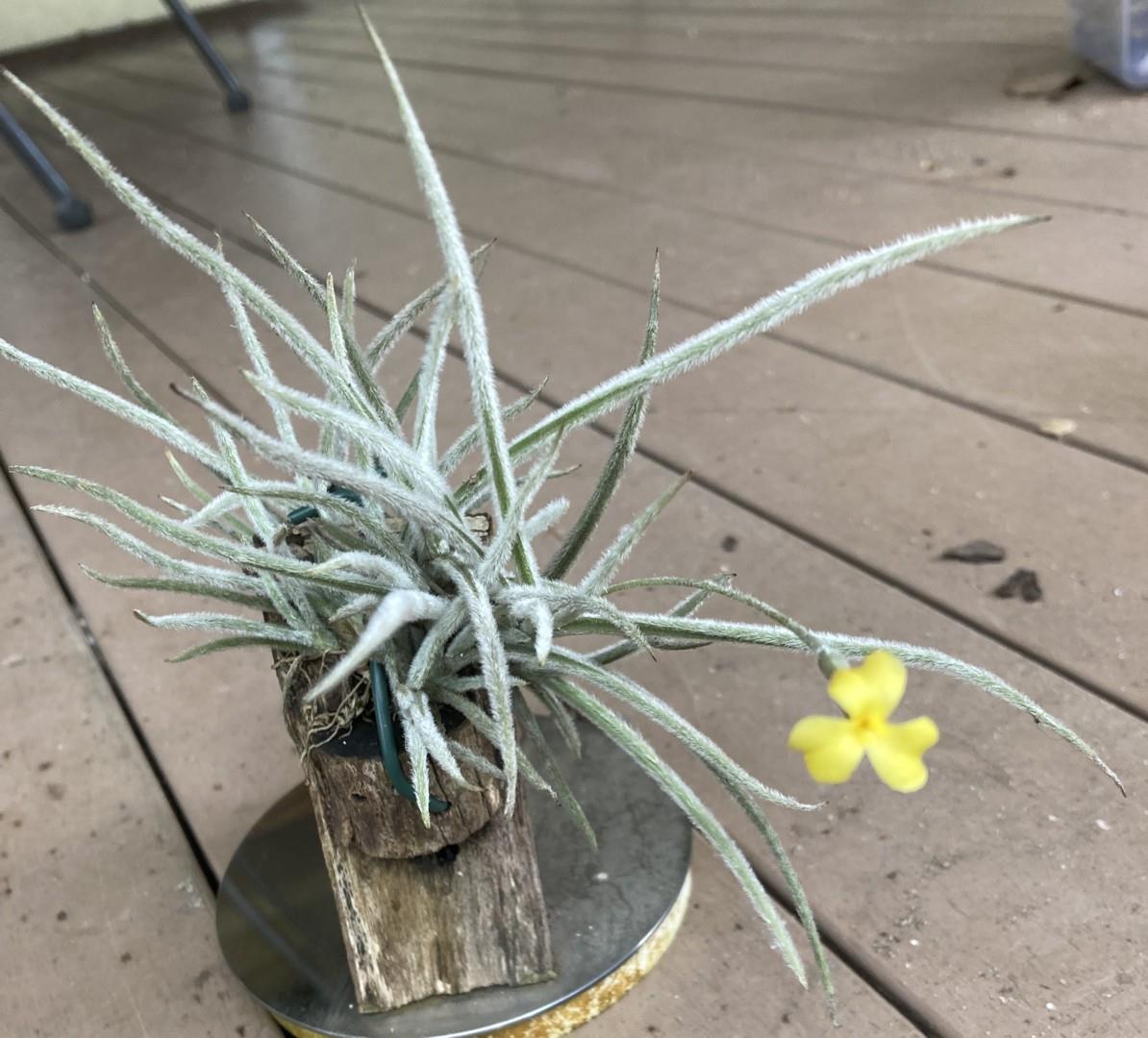
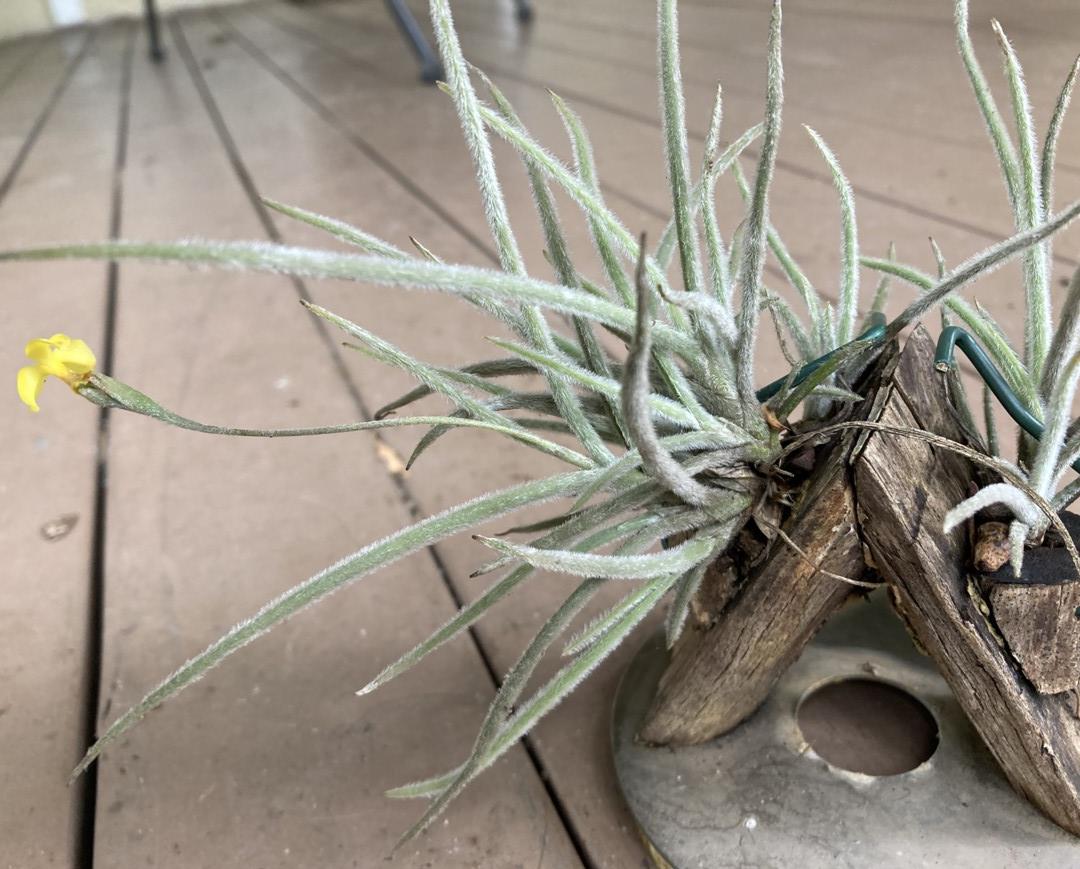
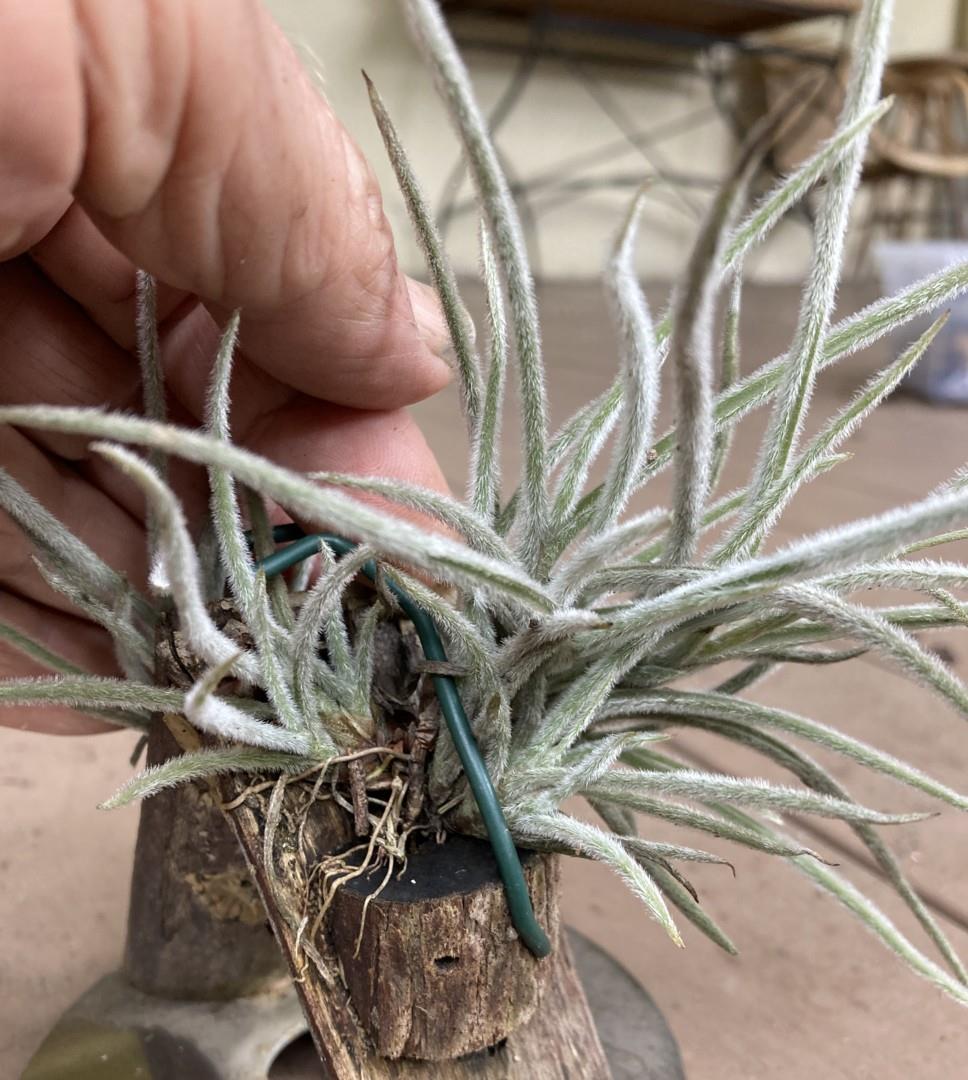
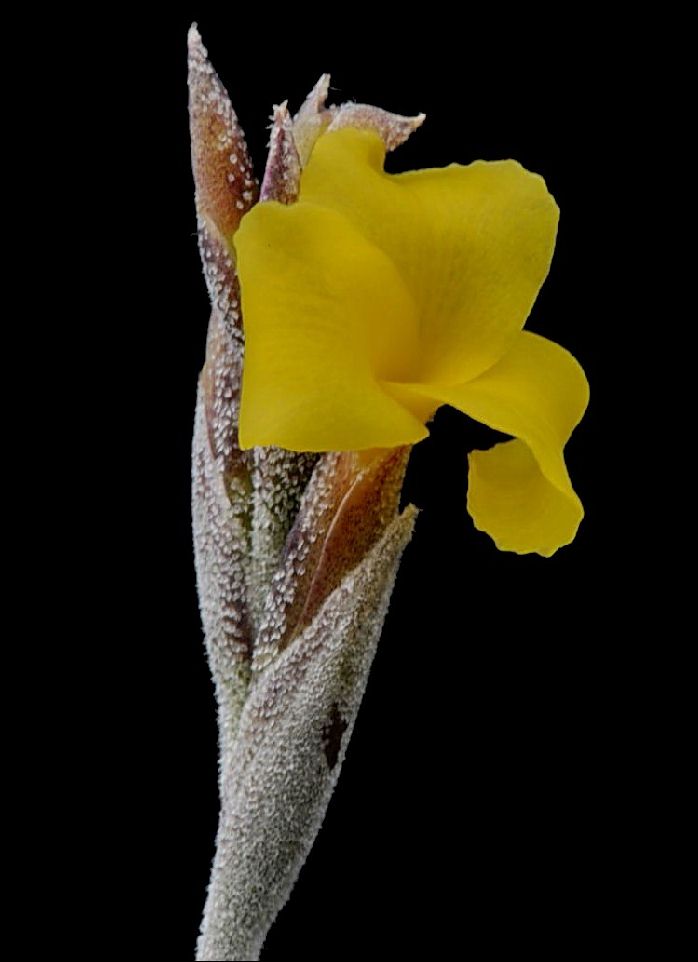
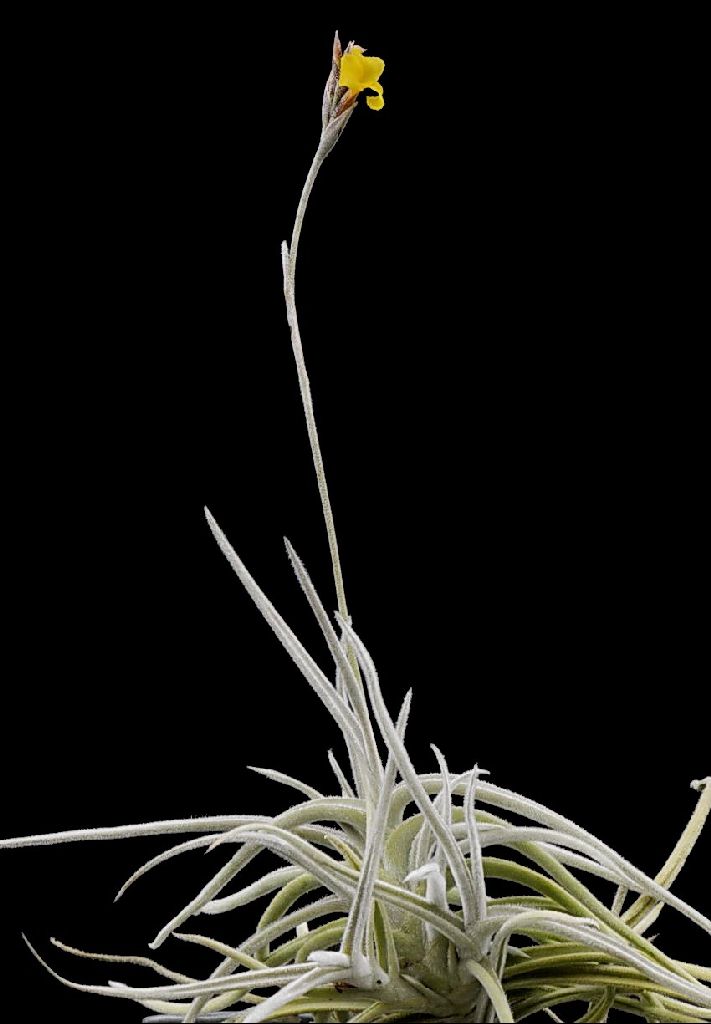
In 1983 there a small hiccup when Werner Rauh introduced us to T. crocata var tristis and luckily this only lasted a year because in 1984 Walter Till (The Diaphoranthema expert) replaced it with T. caliginosa with its dirty yellow/ brownish flowers. Apparently Lyman Smith pointed out anomalies in 1935 regarding T. myosura but went no further! Such are the problems faced when you like botanists to be as accurate as possible. What is more annoying is that we do not have a full specific description of T. caliginosa. At the same time T. mandonii emerged which I call the poor man’s crocata because it has smaller flowers. This is not common in Australia. So there are identity problems at species level.
In Werner Rauh’s deliberations with his ‘tristis’ he mentioned an orange petalled T. crocata linked to Dr. Rutschmann. I contacted Renate Ehlers and ‘yes’ she knew about this plant and was growing it. So a few pieces got to Adelaide. It needed a name and the Germans seemed reluctant to treat it as a forma under T. crocata because it had garden origins - see following Email
"04 Dec 2006 Dear Derek and Eric,
As to the T. crocata ‘Orange’: This plant is not known from the wild, Juerg Rutschmann got it from a garden in Porto Allegre. But as far as I know in Rio Grande do Sul there is no T. caliginosa.
Regards Renate"
I registered the name ‘Rutschmann’s Orange’ but have no idea what they call the plant in Germany! It may be prudent to mention here that when I asked Luiz Filipe Varella, Tillandsia grower and intrepid explorer and Porto Allegre resident, what was the colour of T. crocata, he said Orange. It would therefore seem that the orange flowered form is more common than I thought.
This seems to be confirmed by reference to a plant named ‘Copper Penny’ by Mike Kashkin in California in the 1960’s but never registered until recently. To me the colour is more light orange. We do not know where this plant originated but assume Bolivia because this area is linked to Kashkin’s collecting zone.
This gives an idea of names at species level. Now to hybrids which are an intriguing subject. If you are a rose grower you would probably grow only hybrids with never a species in sight. All seem to be better than the species in colour of flower or vigour.
Many tillandsia hybrids seem to be brought into existence for want of something different to the hybridist rather than better. The first one to be registered in the BCR would have been ‘Tawny Yellow’ in 2001 which Rolly Reilly and myself worked out the possible parents to be (crocata x mallemontii). In 2011 we had Barry Genn’s ‘Gold Dust’ and in the following year ‘Nugget’. Then we had a period where Holm’s hybrids had been imported from Germany which circulated under parentage formula. The first one to be given a proper name and registered was in 2015. The only one that gave me concern regarding identity and similarity to species T. crocata circulated as either (crocata x caliginosa) or the reverse. If anyone has this name on the label it was registered as T. ‘Holm’s Wintersun’.
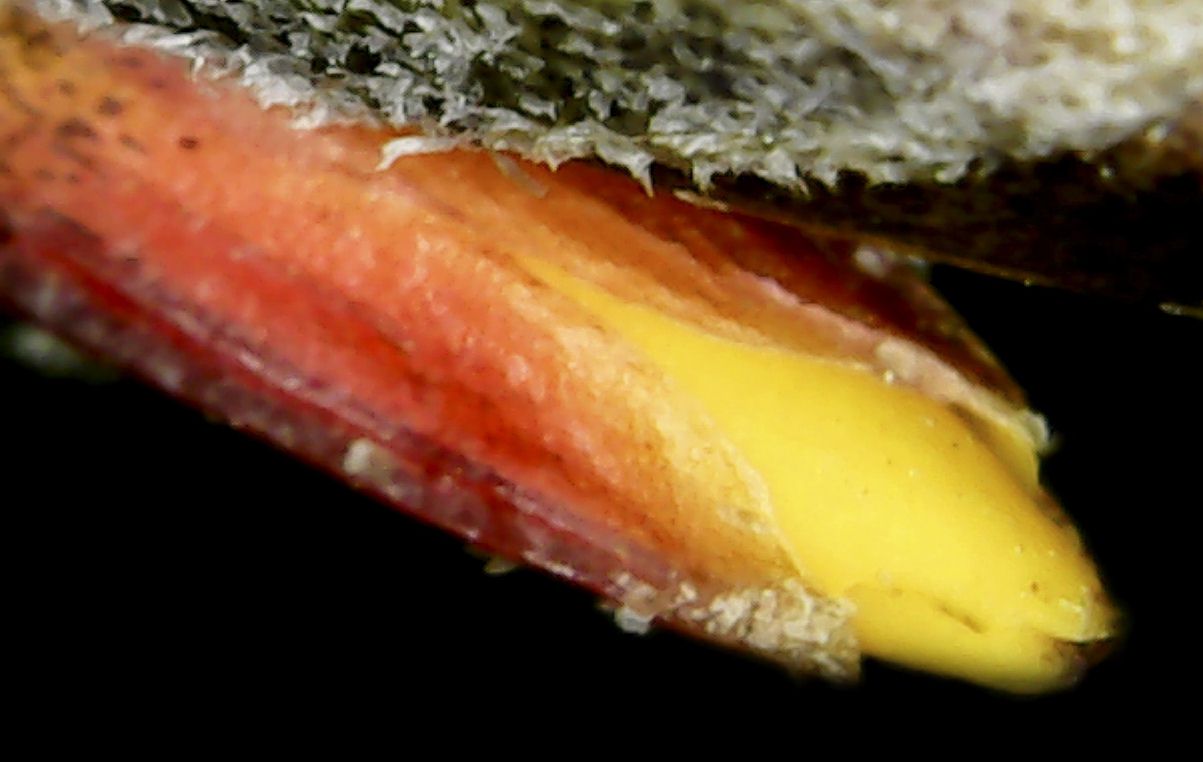
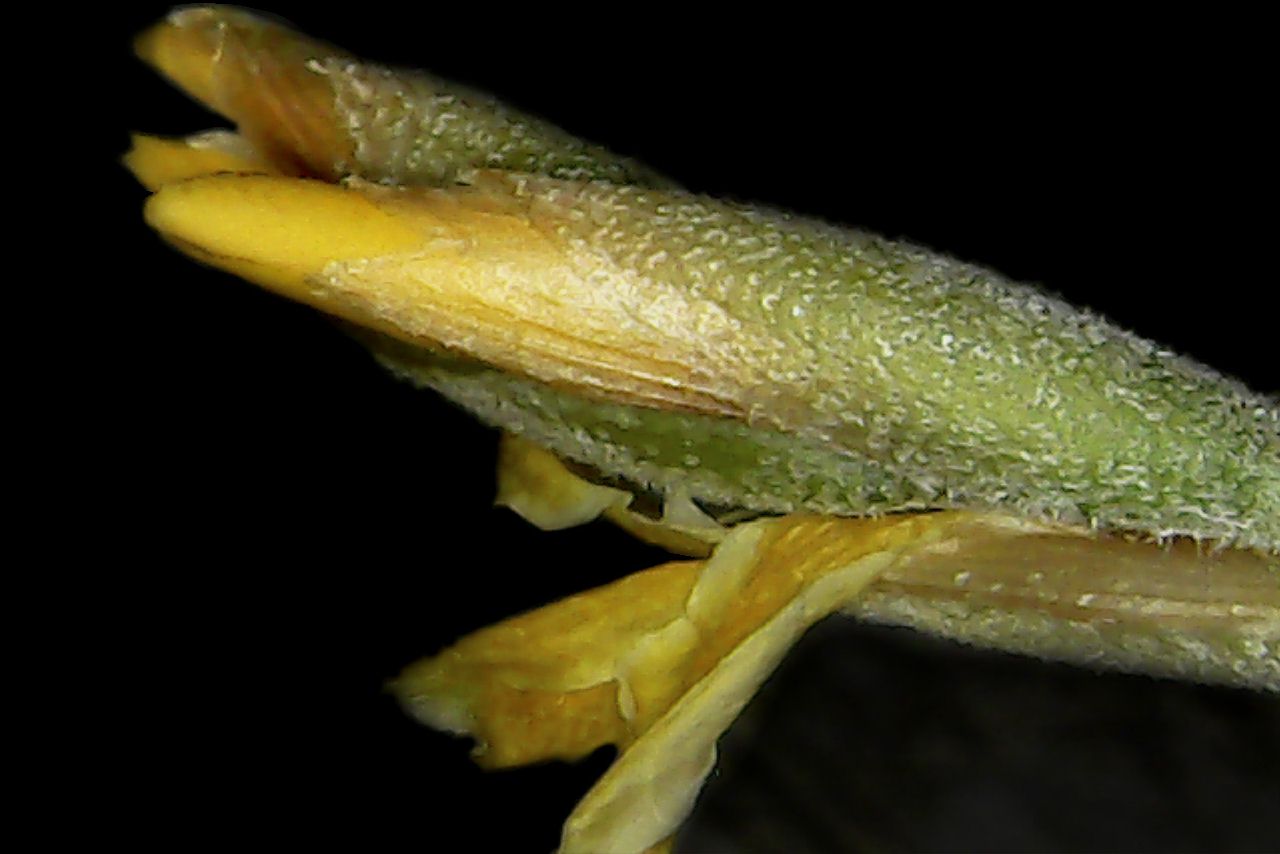
T. crocata protologue
Phytarrhiza crocata Sp. Nov – Nous avons reçu l’été dernier, de M.A.Lietze, ? Rio-de-Janeiro, quelques spécimens d’une petite Broméliacée que nous crayons nouvelle pour la science et pour la culture et qui nous paraît appartenir au genre Phytarrhiza ou nous l’inscripétales. En voice la diagnose :
Caulis undulates, ramosus:feliis distichis, pinquiculis, linearibus, subulatis, longissimis, arcuatis vel refractis, undosis, sericeis, pilis adversis. Scapo elongate, tenui, subnudo, villoso. Spica disticha, brevi, elliptica, sub 5-flora; petalis ellepticis, patentibus, crocatis.
Les poils rebroussés, soyeux et blancs on tune ressemblance avec le Tillandsia tectorum, mais, dans cette espèce, les feuilles sont disposées en spirale sur plusieurs rangs. Il y a aussi des affinités avec les Diaphorantema.
Tillandsia crocata (E. Morren) Baker, Jour. Bot. London 25: 214. 1887.
Phytarrhiza crocata E. Morren, Belg. Hortic. 30: 87. 1880.
Desc from S&D p873-4
Plant 15-35 cm long;
roots present;
stem simple or few-branched, to 2 dm and longer.
Leaves distichous, 1-3 dm long, densely tomentose-lepidote with fine reflexed scales;
Sheaths broadly ovate, glabrous except for the upper half outside;
Blades spreading or recurving, linear, long-attenuate, involute-subulate, 2-5 mm in diameter.
Scape terminal, erect or nearly so, slender, 5-15 cm long, retrorse-tomentose like the leaves, naked or with a single foliaceous bract.
Inflorescence always simple and distichous-flowered, lanceolate or elliptic, acute, 1-4 cm long without petals or capsules, densely 2-6-flowered with the terminal flower sometimes sterile.
Floral bracts imbricate, 2-5 times as long as the internodes, ovate, acuminate, to 2 cm long, about equaling the sepals, densely tomentose-lepidote; pedicels very short;
Flowers fragrant.
Sepals sublanceolate, broadly acute or obtuse, thin, nerved, densely appressed-lepidote except in extreme age;
Petals to 2 cm long, the blade suborbicular, obtuse, 6-8 mm wide, bright yellow;
Stamens deeply included, exceeding the pistil.
Capsule cylindric, 3 cm long.
Type. Lietze s n, Rio de Janeiro, Brazil, 1879. No specimen extant, species typified by Morren Icon (K, GH photo).
DISTRIBUTION. Saxicolous, 875-2650 m alt, Bolivia to southern Brazil and Uruguay. BRAZIL. RIO DE JANEIRO: Serra dos Pinheiros, Itatiaia, Nov 1903, Moreira 5 (R). PARANA: Vila Velha, Ponta Grossa, 23 Mar 1904, Dusen 4284 (R, S); 4 Feb 1909, 7628 (NY, S); 7642 (5); 25 Jan 1910, 9238 (GH, S, US); 28 Aug 1939, Goncalves s n (SP, US); Foster 414 (GH, R); 7 Feb 1948, Tessmann s n (US); 14 Jan 1965, Smith, Klein & Hatschbach 14450 (HBR, R, US); Fazenda Cambiju, Ponta Grossa, 14 Mar 1963, Hatschbach 9796 (HB, MBM, US); Carambei, Rio Sao Joao, Castro, 14 Apr 1966, Hatschbach 14207 (MBM, US). RIO GRANDE DO SUL: Rio Jacui, Tweedie 427 (K); Porto Alegre, 21 May 1893, Golland in Lindman s n (S); Sao Leopoldo, 13 Sep 1935, Rambo s n (LIL, PACA). URUGUAY. MERCEDES: Rincon del Cololo, 1893, Osten 3055 (MVM). WITHOUT EXACT LOCALITY: Miers 1367 (BM). ARGENTINA. ENTRE RIOS: Concepcion del Uruguay, Mar 1882, Hieronymus s n (S).
T. crocata ‘Orange’ flowers
Date: 04 Dec 2006 18:42 GMT
Dear Derek and Eric,
As to the T. crocata orange: This plant is not known from the wild, Juerg Rutschmann got it: from a garden in Porto Allegre. But as far as I know in Rio Grande do Sul there is no T. caliginosa.
Regards Renate
From Baker 1889
20. T. CROCATA. Baker in Journ. Bot, 1887. 214.
Phytarrhiza crocata E. Morren in Belg..Hort. 1880, 27 (M.D.)
Leafy stem 3-4 in. long. Leaves laxly disposed, reflexing, linear-subulate 6-9 in. long, 1/6 – ¼ in. broad low down, firm in texture, densely clothed with spreading hair-pointed whitish scales.
Peduncle slender, 6-8 in. long;
bract-leaves few, with long erect subulate points.
Flowers few, in a simple dense spike 1-1/2 in. long;
flower-bracts oblong-lanceolate, densely lepidote, ½ - ¾ in. long. Calyx ½ in. long; sepals acute. Petal-blade obovate, bright yellow, ¼ - 1/3 in. long. Stamens and style not longer than the calyx.
Hab, South Brazil. Tweedie 427 ! Introduced into cultivation by Lietze in 1879.
From Mez 1935
362. T. crocata (Morr.) Bak. in Journ. of Bot. XXV. (1887) 214. –
Phytarrhiza crocata Morr. in Belg. Hortic. XXX. (1880) 87. –
Longe crassiusculeque caulescens, ad 0,25 m longa mihi visa. Folia optime distiche ordinata, ad 0,2 m longa et 4 mm crassa, tota subulata subteretia, apicem versus persensim acuta, lepidibus maximis piliformibus refractis dense villosa. Scapus manifestus, gracilis, ad 0,12 m longus, dense villosus, vaginis perpaucis tubulosis, breviter laminigeris, dorso densissime villosis, quam internodia conspicue brevioribus praeditus. Inflorescentia simplicissima, dense disticha, perpauci-(usque ad 6-)flora, ad 30 mm longa et 10 mm lata, sublanceolata; bracteis dorso villosis, ex ovato sensim acutis , ad 17 mm longis, sepala subaequantibus. Flores stricte erecti; sepalis antico libero, posticis binis ad 2 mm connatis, lepidotis, sublanceolatis, acutis, ad 15 mm longis. Petalorum laminae croceae, explanatae suborbiculares, 6-8 mm longae. Stamina profunde inclusa, stylum superantia.
Brasilien: Staat Rio Grande do Sul, am Flusse Jacuhy (Tweedie n. 427).